If you are reading this article, it has been a while since you gave your home a makeover. The color has faded from your cabinets, tables, and kitchen utensils, including your wooden cutting boards. But the new year is around the corner, so you have got to get everything to look new again.
Now, a wood stain or finish might be the best idea to get your cabinets and tables glowing anew.
But what about your kitchen utensils? Those have direct contact with your food. Should you use a wood stain, which potentially contains toxic chemicals that don’t belong in your food?
In this article, I will cover reasons you should avoid a wood stain and what to consider if you decide to get one anyway. Also, you will learn the different types of stains and the level of risk attached to them. Then, we will wrap up with some better alternatives to wood stains.
Sounds good? Let’s get right into it.
JUMP TO: Why You Should Not Stain Cutting Boards | Wood Stains You Should Use | Wood Stain Alternatives | How To Apply Mineral Oil |
- Painting your cutting board is a solid NO.
- Using colorful hardwood to craft your cutting boards is the best alternative.
- You can then maintain the color using mineral oil.
- Food-safe stains are toxic in liquid form but safe when dry.
- Food-grade stains are entirely non-toxic and safe to consume.
- Water-based stains last longer than Oil-based stains.
why should you not stain your cutting boards?
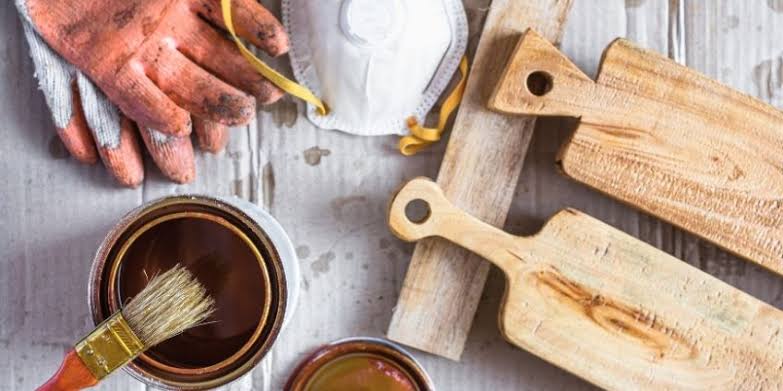
Source: ECOS Paints
First of all, let us get two things straight.
Can you stain cutting boards? Like every other wooden structure, yes.
Should you stain cutting boards?
NO. And by no, I mean you should think twice. Or four times. Here is why.
Wood stains contain toxic chemicals such as petroleum, glycol, and volatile organic compounds, which have harmful effects when consumed. It means staining your cutting boards might render your food unsafe for consumption.
However, leaving your cutting boards to dry for 30 days after staining makes them safe. This is because wood stains are only toxic in liquid form. As they dry, VOCs evaporate. You can use the cutting board then.
This might sound like a good bet to take, but as you use your cutting board and it begins to crack, some of those toxic particles are bound to end up in your food anyway. Therefore, your best bet is to avoid wood stains altogether on the cutting board.
But if you must use stains, what should you look out for? Which options will expose you to the most minimum risks?
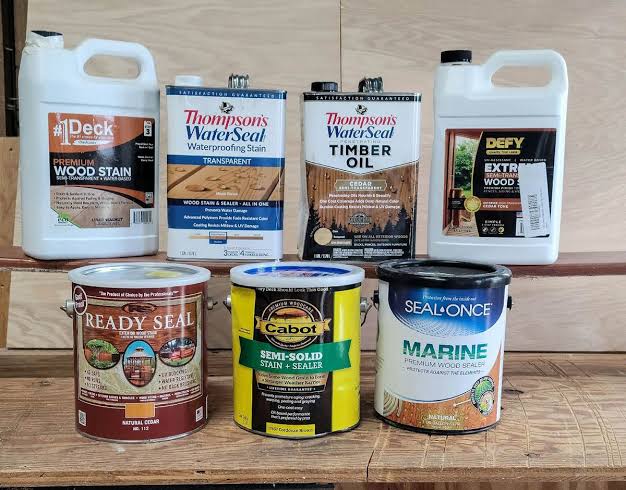
Source: Bob Vila
what types of wood stain should you use
Before we go into the factors you consider when choosing which stain to buy, let’s look at….
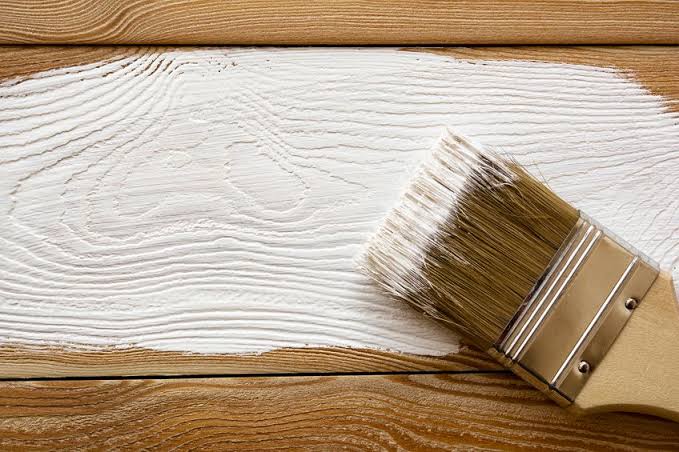
Source: resin-expert
Paint Vs. Stain
Some may ask, why buy wood stains when I have leftover paint in the house? I should use paint, right?
The answer is NO. If there is anything more harmful than using wood stain, it is using paint.
Your regular paint contains toxic chemicals such as glycol, formaldehyde, and lead, which should not come near your mouth or stomach.
According to the WHO, almost 1 million people die yearly from lead poisoning. Lead paint contributes to this statistic. WHO also states that only 45% of countries have legally binding controls on lead paint.
When it comes to your health, that percentage is too low to bet on. Even though it is cost-saving to use leftover paint from your last wall makeover, please don’t do it.
Related Read: Acrylic Vs. Lacquer Kitchen Cabinets
That said, here are the factors you need to consider when buying wood stains:
- How easily does it penetrate the wood grain?
- Can it resist wear and tear?
- How easy is it to apply?
- How long does it last?
- Does it need a protective finish?
With these questions in mind, let’s compare some types of stains.

Source: The DIY Hammer
Water-based Vs. Oil-based Stains
Firstly, the significant difference between water-based and oil-based stains is the solvent used. This means that water is the solvent used in water-based stains, while oil-based stains use oil.
How are oil-based stains better than water-based stains?
- Oil-based stains penetrate better into the wood. This is because oil molecules are smaller than water molecules.
- Its ability to penetrate makes an oil stain easier to apply. This reduces the number of coats you need to apply to get the job done.
- They resist wear and tear better. Although they fade fast over time, they don’t peel.
- With an oil stain, you don’t need an additional finishing product.
How are water-based stains better than oil stains?
- Water-based stains dry faster, so you have a lower waiting time.
- Unlike oil stains, they do not give off toxic fumes, making them more comfortable to use.
- They fade slower. Water-based stains are resistant to UV light, making oil stains fade fast.
- Unlike oil stains, they don’t seal wood pores, which gives the wood cutting board room to breathe. That breathing room prevents bacteria, which are attracted to moisture, from growing.
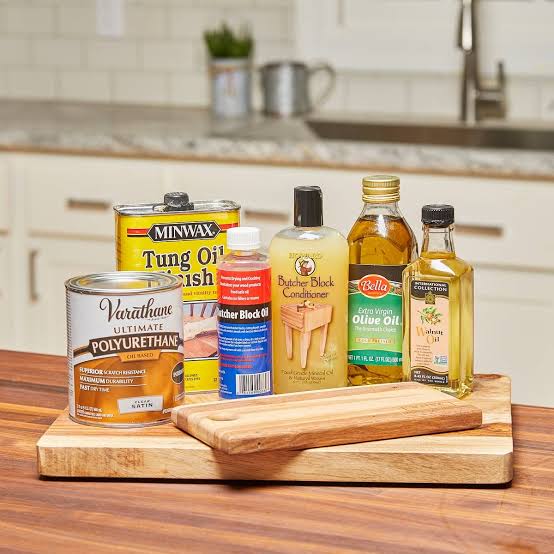
Source: The Family Handyman
Food-safe Vs. Food-grade Oil Finishes
Food-safe oil stains are your regular oil finishes. Toxic in liquid form, safe when dry. Everything I have mentioned before now falls under the food-safe category.
Despite the name, stains in the food-safe category aren’t entirely safe, even though they are FDA-approved. The fact that it is better to avoid them entirely still holds.
On the other hand, Food-grade mineral oil finishes are completely non-toxic to be applied on your wooden cutting board. You don’t have anything to worry about when they come in contact with your meal. They are made of natural or mineral oils, which I will discuss in the alternatives.
A downside to using food-grade stains is that they aren’t as durable as food-safe ones. You have to reapply them regularly to keep your cutting boards looking new.
I think you would agree that this is an acceptable downside compared to all the health risks of using the so-called food-safe finishes.
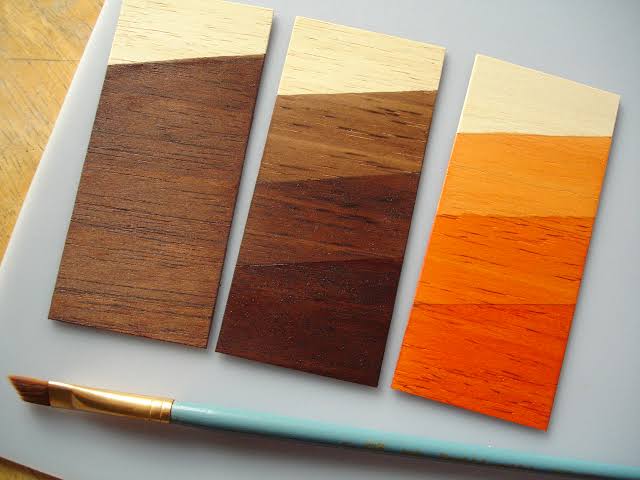
Source: davidneat
best alternatives to wood stains
We have established that wood stains aren’t safe no matter the food-safe label that comes along with them. So then, what is the alternative to using a wood finish on the cutting board?
Buy cutting boards made from hardwood.
According to ttf.co.uk, there are over 20,000 commercially available species of hardwood. All these species come in different colors and shades. Get yourself a wood cutting board that has a naturally beautiful color.
Related Read: How to Lighten Up a Kitchen with Cherry Cabinets?
Here is an image showing some species of hardwood and their colors:
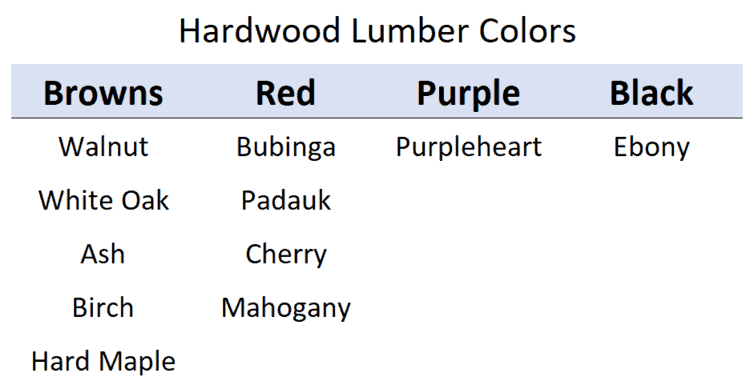
Source: tylerbrownwoodworking.com
Use mineral or natural oils
This is where I circle back to food-grade finishes on the wooden cutting board. Mineral or natural oil is another name for food-grade oil. These do not contain any harmful chemicals.
Pros of Using Natural Oils
- You can consume them, and that is 100% assurance right there.
- Mineral oil brings out the natural color of your cutting board, giving it a brand-new feel without any side effects. This works hand-in-hand with buying a cutting board made from your favorite hardwood color.
- Natural oils prevent liquid from sinking into your wooden cutting boards. This prevents bacteria from growing on it.
Cons of Using Natural Oils
- They are not durable. They fade quickly, so you need to reapply constantly.
But when it comes to food safety, that is a tiny price to pay.
Coffee as a Food-grade Stain
Yes, you read that right. Coffee is an example of a food-grade stain. Simply mix some coffee with water, and you have yourself a colorful and safe finish that doesn’t block wood pores.
In addition, it is cheap and easily accessible. You can use mineral oil as a final finish afterward to give it that extra shine.
However, there are three problems with using coffee:
- It doesn’t last more than a month at best, meaning you must reapply constantly.
- For your wooden cutting board to absorb the coffee stain, apply a water-tight sealant first. This sealant will prevent your coffee from fully absorbing water, which makes it the ultimate breeding space for bacteria.
- Coffee has a shelf life and can spoil. Then, it becomes the ultimate breathing space for mold.
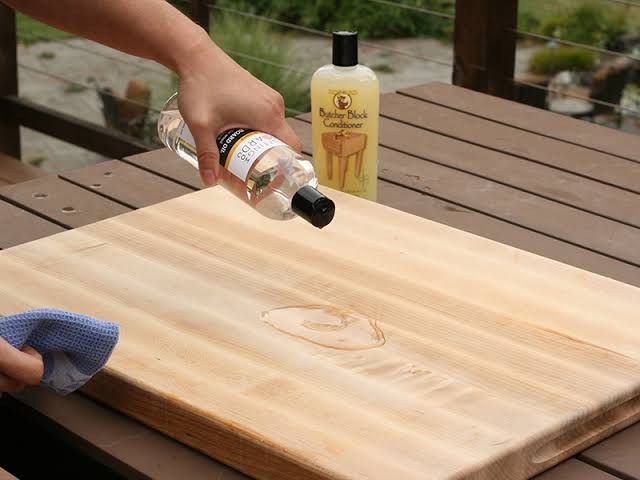
Source: cuttingboard.com
How to Apply Mineral Oil to Cutting Boards
Step 1: Wash your cutting board thoroughly. You can get the best result using a paste of lemon juice and baking soda.
Step 2: Use food-grade glue to fill any cracks in your cutting board.
Step 3: Use sandpaper to even it out.
Step 4: Apply mineral oil multiple times until you no longer notice a slight fading when you apply.
![Wood Cutting Board Vs. Plastic Board [Which is Safer?] Wood Cutting Board Vs. Plastic Board [Which is Safer?]](https://houseadorable.com/wp-content/uploads/2023/01/wood-board.jpg)
![27 Types of Cutting Boards Explained [Buying Guide Included] 27 Types of Cutting Boards Explained [Buying Guide Included]](https://houseadorable.com/wp-content/uploads/2022/12/cutting-board.jpg)
![How to Disinfect Wood Cutting Board? [5 Methods] How to Disinfect Wood Cutting Board? [5 Methods]](https://houseadorable.com/wp-content/uploads/2023/01/1466451602030.jpeg)
![Is Acacia Wood Good For Cutting Boards? [Explained] Is Acacia Wood Good For Cutting Boards? [Explained]](https://houseadorable.com/wp-content/uploads/2023/01/wood-table-top-with-acacia-chopping-board-with-blur-kitchen-counter-background-is.jpg)
![Charcuterie Board Vs. Cutting Board [8 Differences] Charcuterie Board Vs. Cutting Board [8 Differences]](https://houseadorable.com/wp-content/uploads/2023/01/316322082_5650827684977137_862859335334204275_n.jpg)
![Bamboo Vs. Wood Cutting Board [9 Differences Explained] Bamboo Vs. Wood Cutting Board [9 Differences Explained]](https://houseadorable.com/wp-content/uploads/2023/01/cutting-board.jpg)
![Can You Put A Wooden Cutting Board In The Oven? [Answered] Can You Put A Wooden Cutting Board In The Oven? [Answered]](https://houseadorable.com/wp-content/uploads/2023/01/clean-wooden-cutting-board-4772583_01-2aba9de81be84c55a8e1dbb63822b806-scaled.jpg)
![Can Cutting Boards Dull Knives? [Answered + Explained In-Depth] Can Cutting Boards Dull Knives? [Answered + Explained In-Depth]](https://houseadorable.com/wp-content/uploads/2022/11/knives.jpg)